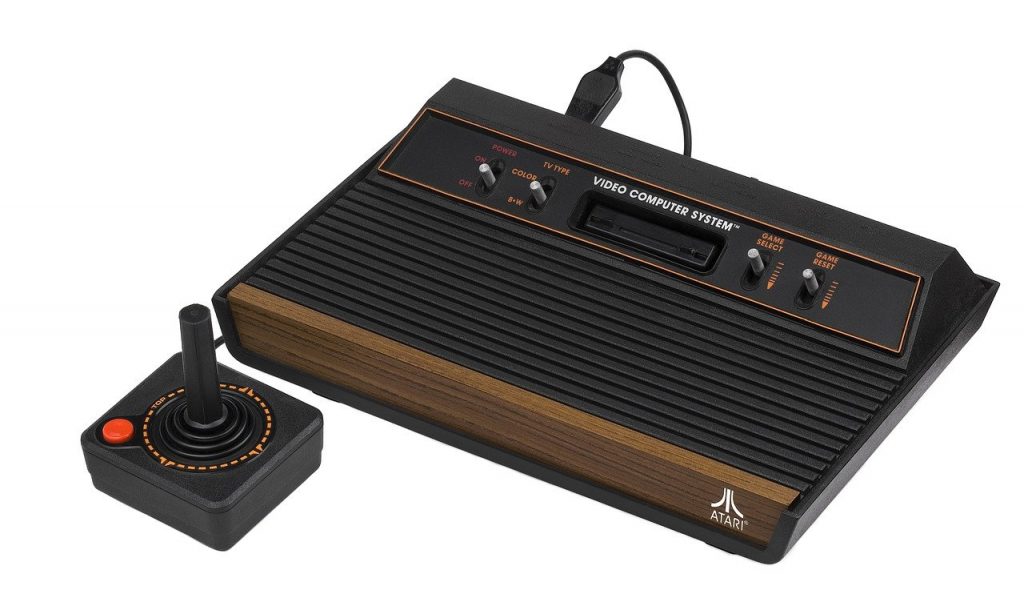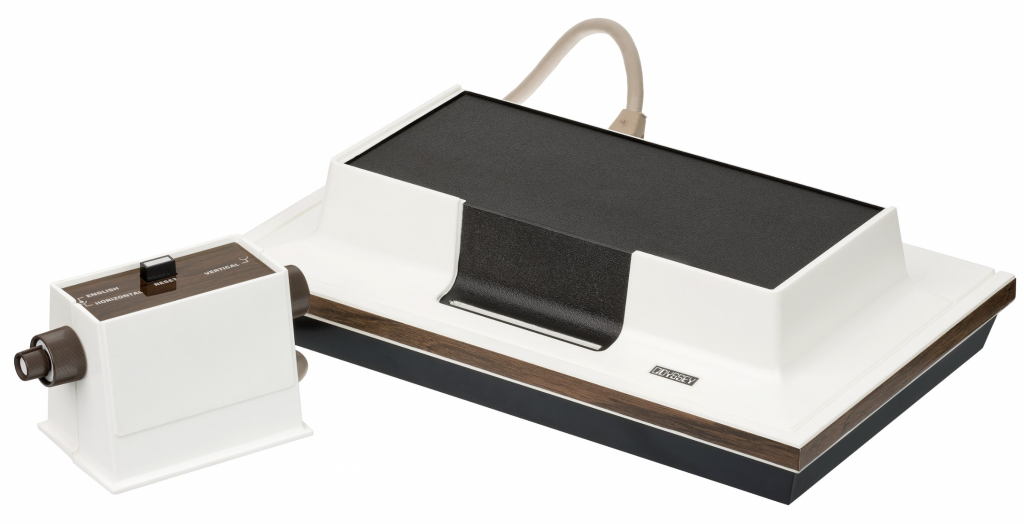The First Video Game Console Was One You’ve Never Heard Of
What was the first video game console and why might you have never heard of it? It predated some of the most popular ones we know
This article is more than 2 years old

The video gaming industry has become a 100s of billions of dollars behemoth at this point, operating with a massive market share and becoming part of the fabric of our current society. It’s been a long time coming though I think few saw that this would ever grow to its current size. Video games are as much a part of our culture as anything else, especially on the entertainment side of things. They account for huge sums of money in the economic system and are used for hours and hours on end by folks of all ages. But where did it all start? What was the first video game console? How did we get to this place?
Much of that can be seen and explored in our History of Gaming Consoles which looks at the path and journey of these machines over many, many decades. It’s a long and winding story, starting pretty innocently (though intuitively) in a research institute and growing at an almost exponential pace over the years.
Here we’ll look back at the first video game console and what it meant for the industry. How was it born and what did it ultimately give life to in this market? For many, the first video game console might not be what you’d expect, and it didn’t even necessarily have the staying power of what would come after. It laid some of the groundwork, though others went and ran with the idea and concept for their own gain. Let’s take a look at the build-up for the industry and then what would become the first viable video game console to hit the market.
THE FIRST VIDEO GAMES

In the history of video gaming consoles, it makes sense that the first steps along this journey wouldn’t be a box, some controllers, and a wealth of games showing up in living rooms around the world. Of course not. Though that’s what would ultimately help grow the industry as a whole, before gaming consoles could take root as viable sellers, there had to be an established baseline for video games in general.
Much of this can be traced back to two specific games developed in the late 1950s and early 1960s. Those were Tennis for Two and SpaceWar!. Back at a time when computers were still a long way off from being in everyone’s homes and offices, there were select groups out there working with this relatively new technology. Though it had military applications to start (what tech doesn’t?), there were some folks exploring how everyday users could interact with the machines in a way that could be both fun and entertaining. At this point, there didn’t seem to be any big push to bring computer games to the marketplace mostly because there were so few computers. But that didn’t mean some weren’t thinking about the possibilities.
The first was William Higinbotham who was working at the Brookhaven National Laboratory. We began the first iteration of the video game console, or at least its bones when he helped create and manufacture the game Tennis for Two. This was played on what looked like a radar readout screen and Higinbotham helped bring about the first iterations of the controller or joystick. Connected to the computer and readout, Tennis for Two allowed for two players to knock a ball back and forth using the controls. Sound like Pong? Yeah, it should. This game was essentially the predecessor for that game which came around 14 years later.
The other game which came around near the beginning of this timeline was SpaceWar! which was developed by a group of MIT students in 1962. This was another game using a similar display as Tennis for Two though it brought in that science-fiction element that would become a backbone of early gaming. In this game, two players (a ship and a wedge) were in a “battle” to shoot each other while moving around the screen and avoiding the gravitational pull of the “star” in the center.
WAS ATARI OR NINTENDO THE FIRST GAME CONSOLE?

If you were to ask most folks, those without extensive knowledge of the history of the first video game console, it’s likely that they would say one of two things: Atari or Nintendo. In many ways, they wouldn’t necessarily be wrong seeing as how these two were, most definitely, the video game consoles that appealed the most to the masses. We will get to both in a little bit with just a little more detail. But it’s worth noting here that they weren’t the first video game consoles. Far from it.
What Atari and Nintendo did was capitalize on a growing video game movement while also learning from the mistakes of their predecessors. Sure, this could be the story of almost any successful company in any industry, but in the gaming world it’s particularly apt because there was so much some of the first companies did right, but also a ton they did wrong. Frankly, it’s still happening today. So no, Atari and Nintendo weren’t the first. And as we know they definitely weren’t the last either.
ARCADE GAMES ON THE RISE

Tennis for Two and SpaceWar! are widely considered to help shape the video game industry, but neither really had any real commercial success. The movement had started and there were now plenty of folks out there who wanted to bring video games and consoles to the masses. There were somewhat parallel timelines and tracks happening during the late 1960s and 1970s that dovetailed in a way to help bring about the first video game console.
For starters, in 1971 coin-op arcade games began to gain popularity with the release of Computer Space, the first arcade cabinet box game manufactured and delivered to different locations. It took its approach from SpaceWar! and ended up gaining some traction, though was far from an industry mover.
While Computer Space was first, it wasn’t necessarily credited with kickstarting the next wave of video games in arcades. That was Pong which came out in 1972. Taking its direction from Tennis for Two (see how we are building here?), the game was manufactured and developed by Atari. Though not the first video game console, Pong is credited with essentially bringing this medium into the zeitgeist.
Interestingly enough (though obviously not a coincidence) the two games had the same creators, Nolan Bushnell and Ted Dabney who would found Atari. It was under the latter banner that they put out Pong and it completely worked this time around. The game was a hit in local establishments and helped Atari gain footing in the video game industry, setting the stage for what would happen next for the company. But before that happened, someone else had to develop the first video game console.
THE BROWN BOX
Let’s meet Ralph Henry Baer who is sometimes (and probably correctly) credited as the “Father of Video Games”. No, he didn’t create the first one, that’s been established. But Baer was the one who oversaw the development of the device that would eventually help people bring video game consoles into their own homes. That’s because Baer was one of the first people who saw video games as a viable market mover and he also visioned something that, at the time, few were thinking about. Rather than developing a single-player video game for computer systems (still hard to come by) or for cabinet games (you still had to go somewhere to play them) he wanted to find a way to use something so many already had in their homes.
Amazingly, not everyone was able to see this as viable and many actually scoffed at the idea. Regardless, Baer pushed ahead and with a small team at what would be called BAE Systems, the group developed what was known as the Brown Box. In many ways, this device was the precursor for the modern-day development of video game consoles. It was, like the name suggests, a brown box that could connect to television sets through connections in the back.
Attached two the box were two “contollers” each with knobs that could control what was happening on the screen. Sure, it looks antiquated now, but at the time this was a revolutionary device, one that finally could bring video gaming into people’s homes if they so chose. Frankly, for decades the video gaming industry wouldn’t diverge all that much (at least aesthetically) from what Baer first created with the Brown Box.
ENTER MAGNAVOX WITH THE FIRST VIDEO GAME CONSOLE

Baer knew he had something big on his hands, or at least he thought he did based on some initial reactions. So he went about shopping the Brown Box to various folks. He found a taker in 1972 when Magnavox agreed to buy the system and began mass-producing it for the market. In the acquisition, they changed the name from Brown Box to Magnavox Odyssey. It’s hard to argue with that move and the latter certainly would have seemed like the branding shift at the time. It connected to televisions through an input on the unit and, at the time, basically acted like a channel on the television screen. Magnavox reworked the exterior casing to fall more in line with the color schemes of television sets at the time.
At the time of the release, the Magnavox Odyssey included 12 games that came with the console. These were broken up among six different cards that were inserted into the device. Those games really spoke to the simplicity of the time and looking back almost looked like a time capsule in and among themselves. The first video game console games were Table Tennis, Ski, Simon Says, Tennis, Analogic, Hockey, Football, Cat and Mouse, Haunted House, Submarine, Roulette, and States. There were other games that were sold separately.
While the Magnavox Odyssey did distinguish between the names of the games, it’s worth noting here that almost all of them were of the same baseline type of play. They involved white balls and something like paddles on the screen to move the former around. The mechanics changed slightly, but the viewer now, with video games coming so far, one would probably think they were all the same game.
And really the only way to distinguish between and among the games was to put an overlay on the television screen, a separate piece outside of the video game console. This meant essentially tracking the game yourself. It’s hard to blame Magnavox and Baer obviously, they had done something no one had done before and lit a video game fuse forever. But because of the clunkiness and the cost ($99 or $675 dollars in today’s money), the Magnavox Odyssey didn’t take off at all.
THE FIRST VIDEO GAME CONSOLE IS A BUST

Someone always needs to be first and they often need to take the lumps in order to push forward an entire industry. That’s definitely the case with the first video game console. Though it came along at a time when there was nothing else on the market, it failed to gain a real market foothold. As mentioned, the price was extremely high at the time, making it cost-prohibitive, to say the least. And because video games, from a name recognition aspect, hadn’t become everyday talking points, many didn’t see the need to put one of them in their own homes.
And because this was a new venture, there were aspects of the video game experience that wouldn’t carry over into future iterations from other companies. Namely, the Magnavox Odyssey came with components and pieces like the aforementioned video overlays, but also dice, chips, cards, and play money that was supposed to be used in conjunction with the different games. This was likely done for two reasons. The first was to help ease the transition from traditional board games into what was happening on the television screen. Folks just simply weren’t used to playing games strictly on a screen with a controller. And also, the games themselves needed to be livened up in some way mostly because they were pretty boring.
In all, the Magnavox Odyssey, the first video game console, only ended up selling 350,000 units, a number well below the original expectations. And because the name was associated with a particular brand of televisions at the time (Magnavox, duh) there could have been some confusion about the compatibility with other brands. This all led in some part to the Odyssey being underwhelming in terms of sales.
THE NEXT VIDEO GAME CONSOLE IS REALLY THE FIRST

Magnavox Odyssey didn’t have the commercial success its creators thought it might have out of the box, but it did lead the way for Atari to take the world by storm a few years later. The company had been developing cabinet games for a few years, inspired by Pong and then adding games like Space Invaders and Asteroids to the mix. These already had arcade cabinet game name brand credibility, making the shift to the home console much smoother and much more profitable. But none of it would have happened without the Magnavox Odyssey hitting the shelves first.





